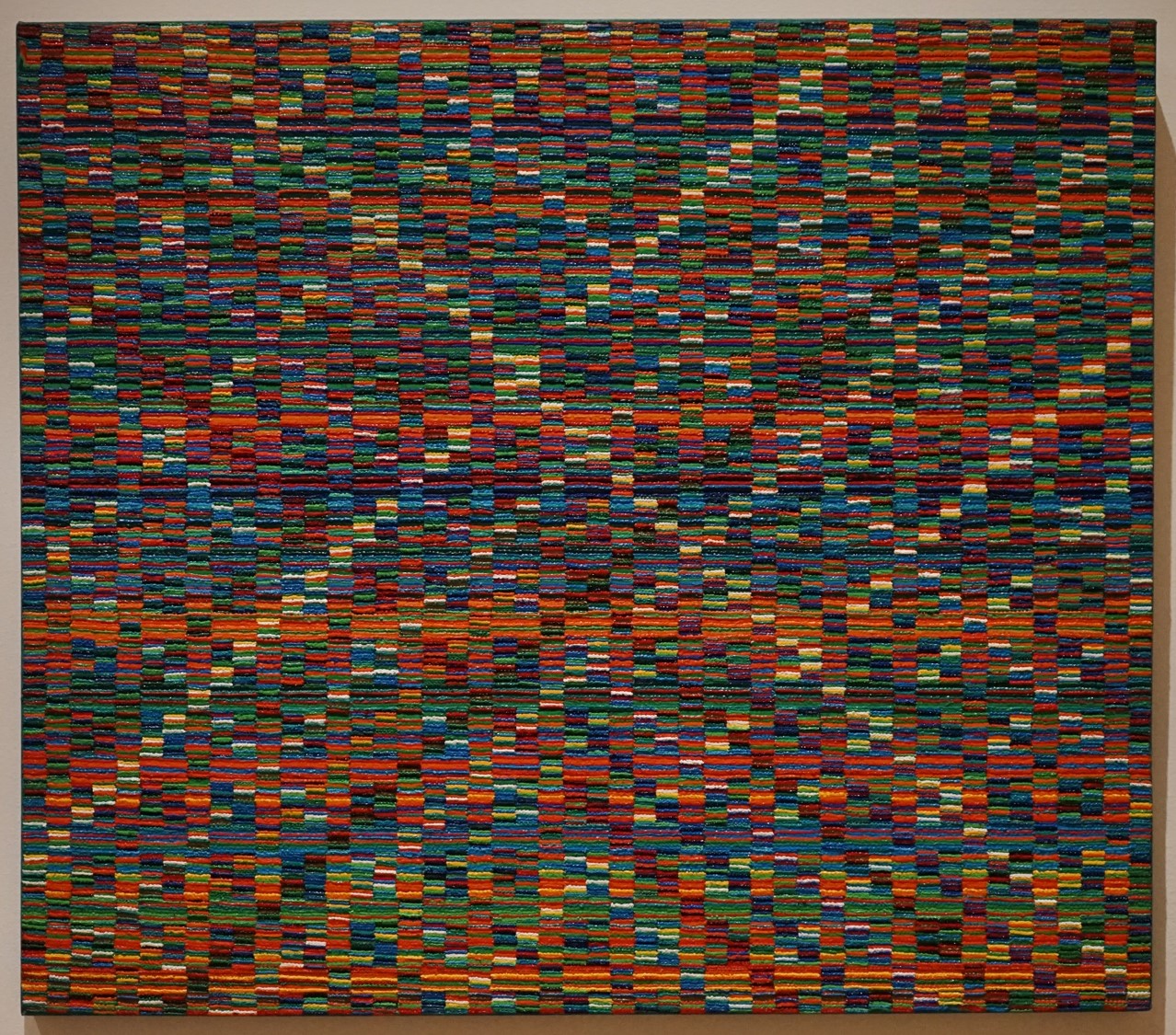Dee Shapiro (b. 1936) creates paintings, prints, and mixed media works that explore the intersections of pattern, geometry, nature, and craft. Learning to knit at the age of four instilled in her an early interest in how patterns develop from small individual components into larger compositions. This ultimately inspired her first abstract paintings in the 1970s, which were based on mathematical concepts, particularly geometry and the Fibonacci sequence. Starting with an empty grid drawn on canvas, Shapiro would transform the numbers in the Fibonacci sequence into patterns of color. For some paintings, including Diagonal Weave, she squeezed paint directly from the tube onto canvas, creating a texture similar to a woven or knitted textile, perhaps as a way to reference her earlier childhood knitted forays into pattern making. Shapiro’s exploration of pattern painting earned her a place among the members of the Pattern and Decoration Movement of the 1970s and 1980s. Artists in the P&D Movement created paintings, sculptures, and mixed media works that emphasized pattern and decorative qualities. Many embraced craft forms traditionally associated with feminine activities, such as weaving or needlepoint, and employed them to create works of fine art. In 1977, noted curator John Perreault organized a major exhibition, Pattern Painting at P.S. 1, which presented work by twenty-two artists working in the P&D Movement. The exhibition included Shapiro’s work and likely led to her increased visibility with galleries and collectors. The Everson organized a solo exhibition of her work in 1981. Diagonal Weave is currently on display in A Legacy of Firsts: The Everson Collects, an exhibition that examines over one hundred years of the Museum’s collecting priorities, from the Museum’s earliest acquisitions in 1911 to work acquired in 2019. A Legacy of Firsts is on view through March 22, 2020.
-Steffi Chappell, Assistant Curator


